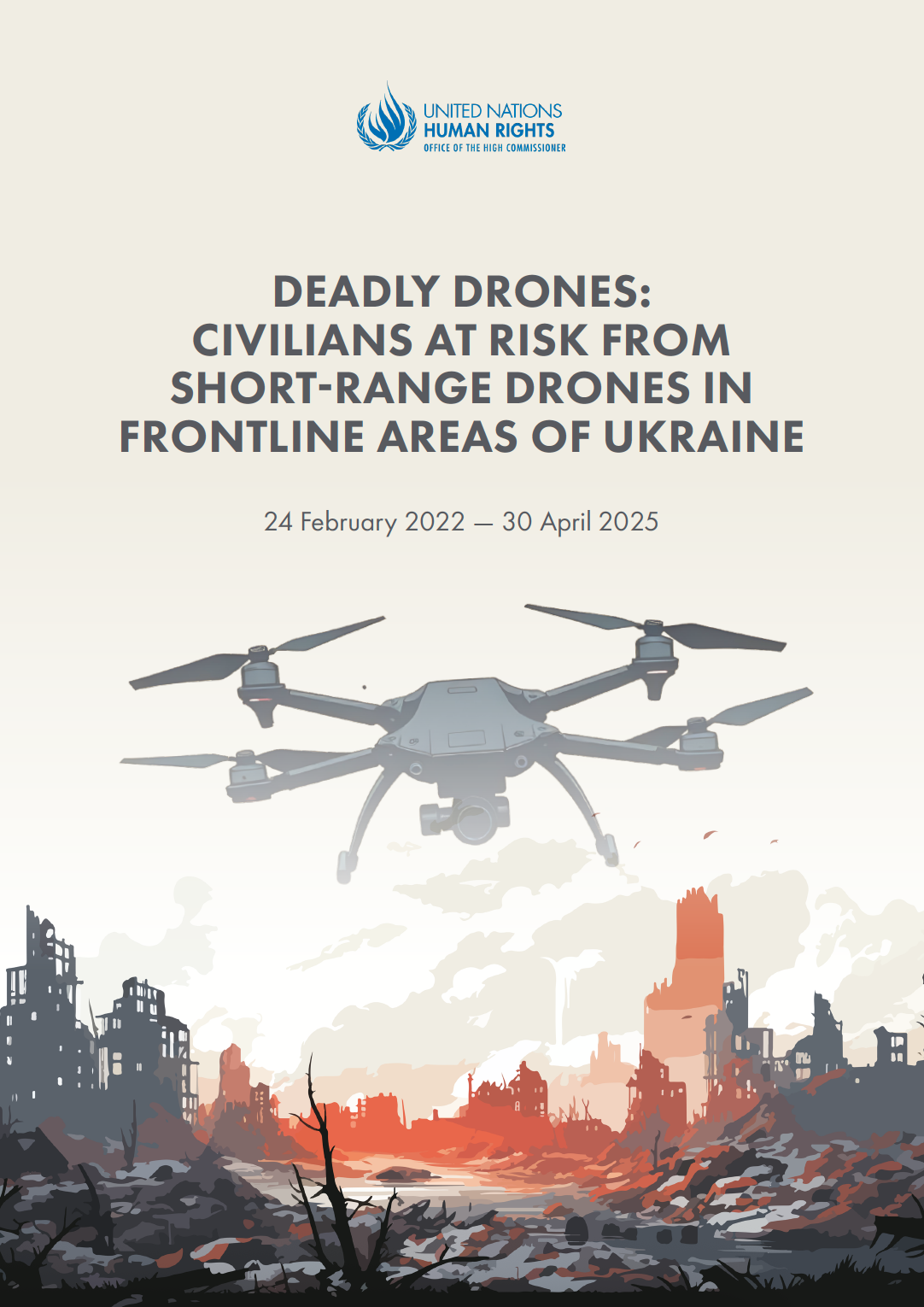Kyiv, 26 June 2025 – Attacks with short-range drones killed at least 395 civilians and injured 2,635 between February 2022 and April 2025, the UN Human Rights Monitoring Mission in Ukraine (HRMMU) said in a new bulletin published today.
The bulletin, Deadly Drones: Civilians at Risk from Short-Range Drones in Frontline Areas of Ukraine, documents attacks in which drone operators targeted civilians driving private cars, taking the bus, walking outdoors, cycling, providing humanitarian assistance or evacuating civilians, and riding in clearly marked ambulances. The vast majority of the casualties (89 per cent) occurred in territory controlled by Ukraine as a result of attacks by the Russian armed forces.
“Although individually less destructive than artillery or missiles, the sheer scale and increasing frequency of short-range drone attacks have made them one of the deadliest weapons in Ukraine,” said Danielle Bell, Head of HRMMU. “Over 3,000 civilian casualties — and the relentless frequency of these attacks — have not only caused immense human suffering but also instilled fear, severely disrupted daily life, and crippled access to essential services in several frontline communities.”
Information verified by HRMMU shows that the number of civilian casualties from short-range drones steadily increased in late 2023 and early 2024, before suddenly doubling in July 2024. The number of casualties reached a record high in April 2025 with 42 killed and 283 injured.
Drone attacks continued to kill and injure civilians in May and June, HRMMU said, with the vast majority of the casualties resulting from Russian attacks in territory controlled by Ukraine. Most recently, on 23 June, a 65-year-old driver was killed in Kostiantynivka, Donetsk region, when a drone struck a minibus. On 22 May, a 58-year-old woman, a local volunteer, was killed in a frontline village in Kharkiv region when a drone dropped a munition on the balcony of a two-story residential building. On 20 May, six civilians — three men and three women — were injured in Dniprovskyi district of Kherson region, when a drone dropped an explosive device on the bus they were travelling in.
“Each of these attacks must be investigated,” said Bell. “Those responsible for targeting civilians and humanitarian personnel must be held to account.”
The large number of short-range drone attacks has exacerbated the already critical humanitarian situation along the frontline, HRMMU said. The attacks have forced residents to drastically restrict their movements, limiting access to essential goods, including food, and services such as medical care, and affecting livelihoods. In some areas, including parts of Kherson city, public transportation has been limited or discontinued due to security concerns related to drones. Older persons and people with disabilities have been disproportionately affected, as they tend to remain in frontline areas and often already face mobility challenges. Government workers, healthcare staff, humanitarian NGOs and municipal repair workers have had to limit critical work and assistance in some areas.
While the majority of civilian casualties were documented in territory controlled by Ukraine, 11 per cent of the total casualties occurred in territory occupied by Russian authorities, including in attacks that struck public transport and clearly marked ambulances.
Most short-range drones have on-board cameras that provide operators with a real-time view of potential targets. The high number of civilian casualties resulting from drone attacks suggests that these weapons have been deployed in ways that violate international humanitarian law, in particular the principles of distinction and precaution. In some instances, drone operators appear to have intentionally attacked civilians or civilian objects, including medical transport and personnel, which would amount to war crimes.
“With on-board cameras capable of distinguishing civilians from combatants in real time, these drones should offer enhanced protection for civilians,” said Bell. “Instead, what we are witnessing is the killing and injury of civilians engaged in everyday life: riding buses, walking home, delivering food, or providing lifesaving humanitarian aid. It is clear that these weapons are not being used in compliance with the laws of war.”

